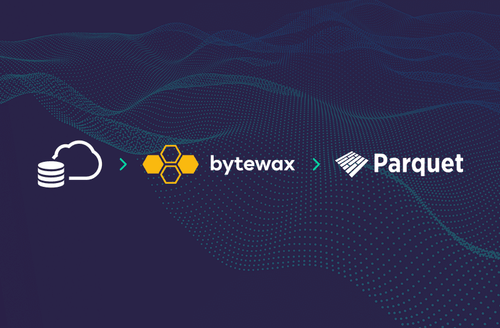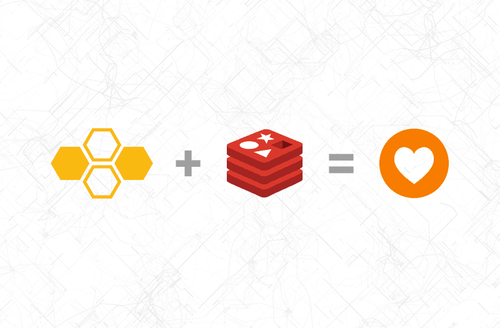

Uses Bytewax Version 0.9.0
Every year, cyberattacks become more and more commonplace. Almost daily there are reports of ongoing cyberattacks causing information destruction, service disruption or data theft. With headlines like, "Russian group claims hack of Lithuanian sites in retaliation for transit ban", "Cyberattack forces Iran steel company to halt production" or "General Motors Hacked In Cyberattack, Personal Data Exposed". One of the most damaging types of cyberattacks is the command-and-control attack, which can be devastating to the targeted organization. In a command-and-control attack, an attacker will first attempt to infect a machine in the organization's network via phishing, browser plugins or other infected software. Once infected the machine will open communication with the attackers machine and the infected machine can be controlled remotely. This can be devastating, with the attackers stealing data, shutting down machines or overwhelming the network with DDoS attacks.
In this post we are going to look at how we can detect suspicious activity on a network that could be a command-and-control style attack. We will use the common network analysis tool wireshark to sniff network packets and then Bytewax to process the flow of packets and analyze the flows for their entropy. This is a very rudimentary analysis and could be fooled by an attacker, please consult a professional for your security needs
We are going to write a Bytewax dataflow that will:
- Connect to the network interface and sniff packets
- Group the packets by flow (source and destination ip and port)
- Calculate the incremental entropy for each additional packet
- Filter down to only low entropy flows
- Alert on these flows
Setup
- install wireshark - instructions here
- install pyshark and bytewax
pip install pyshark bytewax
Building the dataflow
Sniffing Packets
To start, let's construct an input builder, the mechanism for adding input to a dataflow. Create a new python file called packet_analysis.py with the code below. This takes care of some of the later imports as well.
import math
import collections
import pyshark
from bytewax import Dataflow, parse, spawn_cluster, AdvanceTo, Emit
def input_builder(worker_index, worker_count):
# Since our input is not parallelizable, we open a live capture only
# in the first worker.
if worker_index == 0:
capture = pyshark.LiveCapture(interface='en0', bpf_filter="tcp")
epoch = 0
for packet in capture.sniff_continuously(packet_count=2000):
yield Emit(packet)
epoch += 1
yield AdvanceTo(epoch)Now we have our input builder ready to capture packets from interface en0 (note: if you are using a different OS, this interface could be called something different.) and we are filtering for TCP only.
For each packet we receive, we will Emit this to the dataflow and then advance the epoch. The epoch is used to control the flow and completion of processing in a dataflow. We are advancing every time because we are processing one packet at a time downstream.
Processing the Packet
Grouping by TCP Flow
Pyshark provides a nicely formatted object for us, so we can access many of the properties of the packet. Since we are analyzing flows of TCP packets we want to group by the stream number (flow id), which is one of the nice properties that we can use out of the box from wireshark/pyshark. If we did not have this, we could create a key that was of the format source_ip:port:destination_ip:port and use that. We are going to use this flow id to group the TCP packet flows in the next step. Let's create our dataflow and transform the data in a map operator to be a tuple of the shape (flow_number, packet_data).
def group_by_flow(packet):
'''packet flow in pyshark is shown as
the TCP stream'''
# protocol type
protocol = packet.transport_layer
return (packet[protocol].stream, (packet))
flow = Dataflow()
#(epoch, packet_data)
flow.map(group_by_flow)
#(epoch, (flow_number, packet_data))Aggregating and Calculating Entropy
The next step in our dataflow is going to be a stateful operator that will aggregate packets for each flow and then we will be able to calculate the entropy of the size of the bytes in the packets.
An Aside on Entropy:
Diving into the mathematical derivation of entropy is outside of this tutorial. You can think of entropy in this application as the amount of randomness in a stream of information. When the entropy is low, it is uniform and high it is varied. In most applications the flow of bytes has some randomness in it, but if a machine is compromised, it could be sending the same information to the attackers machine repeatedly or the attacker may be sending the same instructions to the machine repeatedly and the entropy will therefore be low. We are going to use an adaptation in the entropy calculation that will allow us to incrementally update the entropy score instead of computing it from the entire set of packets every time to increase the efficiency of our dataflow. The calculation was adapted from this stack overflow answer which is based on this paper.
There is a lot going on in the code below, so we will unpack it below.
flow.stateful_map(lambda key: Packets(), Packets.update)
def log2(p):
return math.log(p, 2) if p > 0 else 0
class Packets:
def __init__(self):
self.count_seen_packets = 0
self.packet_counts_ = collections.defaultdict(int)
self.entropy = 0
def update(self, packet):
self.protocol = packet.transport_layer # protocol type
self.src_addr = packet.ip.src # source address
self.src_port = packet[self.protocol].srcport # source port
self.dst_addr = packet.ip.dst # destination address
self.dst_port = packet[self.protocol].dstport # destination port
self.packet_bytes = int(packet.length) # bytes in the current packet
# calculate entropy of packet size
self.entropy = self._calc_entropy(self.packet_bytes, 1)
# update packet details
self.count_seen_packets += 1
self.packet_counts_[self.packet_bytes] += 1
return self, ((self.src_addr, self.src_port, self.dst_addr, self.dst_port), self.count_seen_packets, self.entropy)
def _calc_entropy(self, size_bytes, r):
'''Modified entropy calculation for estimating the incremental
entropy in a stream of data. This was modified from Blaz Sovdat's
paper - https://arxiv.org/abs/1403.6348 and the corresponding
post - https://stackoverflow.com/questions/48601396/calculating-incremental-entropy-for-data-that-is-not-real-numbers
'''
p_new = (self.packet_counts_[size_bytes] + 1) / (self.count_seen_packets + r)
p_old = self.packet_counts_[size_bytes] / (self.count_seen_packets + r)
residual = p_new * log2(p_new) - p_old * log2(p_old)
self.entropy = self.count_seen_packets * (self.entropy - log2(self.count_seen_packets / (self.count_seen_packets + r))) / (self.count_seen_packets + r) - residual
return self.entropyFirst, lets go over the dataflow line:
flow.stateful_map(lambda key: Packets(), Packets.update)Here we are adding the stateful_map operator to our dataflow as the step after we modified our data in the previous step. Stateful map is a one-to-one transformation of values in (key, value) pairs, but allows you to reference a persistent state for each key when doing the transformation. The operator calls two functions, a builder and a mapper. The builder function returns a new state for each key. In our case this is a new Packets object for each TCP flow id. The mapper transforms the values passed in. In this case it is the Packets.update call.
For every time we first see a new flow id (combination of source and destination ip addresses and ports) we will instantiate a new Packets object.
class Packets:
def __init__(self):
self.count_seen_packets = 0
self.packet_counts_ = collections.defaultdict(int)
self.entropy = 0Then the stateful_map operator will call Packet.update. Which pulls out some information from the packet and then calculates the entropy.
def update(self, packet):
self.protocol = packet.transport_layer # protocol type
self.src_addr = packet.ip.src # source address
self.src_port = packet[self.protocol].srcport # source port
self.dst_addr = packet.ip.dst # destination address
self.dst_port = packet[self.protocol].dstport # destination port
self.packet_bytes = int(packet.length) # bytes in the current packet
# calculate entropy of packet size
self.entropy = self._calc_entropy(self.packet_bytes, 1)
# update packet details
self.count_seen_packets += 1
self.packet_counts_[self.packet_bytes] += 1
return self, ((self.src_addr, self.src_port, self.dst_addr, self.dst_port), self.count_seen_packets, self.entropy)The entropy calculation calculates the probability of seeing the current sized packet given the number of occurrences that a packet of that size has been seen before. A residual is computed and then those values are used to calculate the entropy, which is returned.
def _calc_entropy(self, size_bytes, r):
'''Modified entropy calculation for estimating the incremental
entropy in a stream of data. This was modified from Blaz Sovdat's
paper - https://arxiv.org/abs/1403.6348 and the corresponding
post - https://stackoverflow.com/questions/48601396/calculating-incremental-entropy-for-data-that-is-not-real-numbers
'''
p_new = (self.packet_counts_[size_bytes] + 1) / (self.count_seen_packets + r)
p_old = self.packet_counts_[size_bytes] / (self.count_seen_packets + r)
residual = p_new * log2(p_new) - p_old * log2(p_old)
self.entropy = self.count_seen_packets * (self.entropy - log2(self.count_seen_packets / (self.count_seen_packets + r))) / (self.count_seen_packets + r) - residual
return self.entropyNow once we have the entropy score, we can filter out the random flows with the filter operator and alert when there is a flow that has a low entropy score and has had at least 4 packets in the flow.
flow.filter(alert_low_entropy)
flow.capture()
def alert_low_entropy(packet_data):
flow_number, data = packet_data
flow_details, num_packets, entropy = data
return entropy < 0.5 and num_packets > 4
def output_builder(worker_index, worker_count):
return printThe capture operator is how you specify output of a dataflow. Whenever an item flows into a capture operator, the output handler of the worker is called with that item and epoch. In this case we are just printing out the suspect flow details.
Running the Dataflow
Our dataflow is ready to rock and sniff some packets. To kick off the dataflow we can run it from the command line as a python file. The number of workers should be specified in the call and will be parsed and used in the code below.
if __name__ == "__main__":
spawn_cluster(flow, input_builder, output_builder, **parse.cluster_args())Kick it off!
python packet_analysis.py -w 1You might not have anything printing out to your console if the TCP packet flows are not uniformly sized. So we can modify the dataflow to inspect the dataflow before we filter and print out the current data. To do this, we will use the inspect operator.
flow.inspect(print)
flow.filter(alert_low_entropy)
flow.capture()If you run it again, you will see some output similar to what is show below with the (flow_id, (source/destination), packet_number_in_flow, entropy_score):
('2', (('192.xxx.x.xx', 'xxxxx', '75.xx.xx.xx', '443'), 133, 3.040850689652352))
('2', (('192.xxx.x.xx', 'xxxxx', '75.xx.xx.xx', '443'), 134, 3.0284131076168324))
('2', (('192.xxx.x.xx', 'xxxxx', '75.xx.xx.xx', '443'), 135, 3.016034012982692))
('2', (('192.xxx.x.xx', 'xxxxx', '75.xx.xx.xx', '443'), 136, 3.0037153789402185))
('2', (('192.xxx.x.xx', 'xxxxx', '75.xx.xx.xx', '443'), 137, 2.991458988061217))Thanks for following along! We hope you liked it, if you have any comments or feedback, log an issue in the GitHub repo. Give us a star while you are there if you want to support the project!
Stay updated with our newsletter
Subscribe and never miss another blog post, announcement, or community event.


